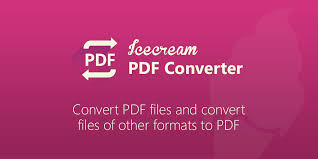Automating PDF Conversion: Tools and Techniques for Streamlined Workflows
Introduction to PDF Conversion
PDF (Portable Document Format) has become a standard for sharing documents across various platforms. However, converting files to and from PDFs can be time-consuming. This article delves into the world of automating PDF conversion for more efficient workflows.
Why Automate PDF Conversion?
Ever found yourself converting multiple files daily? Automation can be a game-changer, saving time and reducing manual errors. But how can you harness this power? Let's dive in.
Popular Tools for PDF Conversion
- Online Tools: Websites like Smallpdf pdf a excel and PDFCrowd offer quick conversions without the need for software installations.
- Desktop Software: Tools like Adobe Acrobat and Nitro Pro provide advanced features for professionals.
Key Features to Consider in PDF Conversion Tools
Before choosing a tool, consider features like batch conversion, OCR (Optical Character Recognition), and compatibility with different file formats.
Streamlining Workflows with Automated Conversion
Automation isn't just about speed; it's about creating a seamless workflow. By automating PDF conversions, businesses can achieve consistency and reduce manual intervention.
Step-by-Step Guide: Automating PDF Conversion
- Choosing the Right Tool: Evaluate your needs and select a tool that aligns with your requirements.
- Setting Up Automated Tasks: Configure the tool to perform conversions automatically based on predefined rules.
Benefits of Automated PDF Conversion
Automation offers benefits like increased productivity, reduced costs, and improved accuracy. Isn't it time you embraced the future of document management?
Challenges and Solutions
While automation brings numerous benefits, challenges like compatibility issues and security concerns can arise. However, with the right strategies, these challenges can be overcome.
Security Concerns in PDF Conversion
Security is paramount. Ensure that the chosen tool adheres to industry standards and offers features like encryption to safeguard sensitive information.
Future Trends in PDF Automation
As technology evolves, we can expect advancements like AI-driven conversions and enhanced collaboration features. Stay tuned for what's next in the world of PDF automation!
Case Studies: Real-world Applications
Explore how businesses across various industries have leveraged automation to streamline their document workflows and achieve remarkable results.
Tips for Effective PDF Management
From organizing files to ensuring compatibility, discover practical tips to enhance your PDF management strategy.1. Understanding the PDF Format
Before diving into advanced techniques, it's essential to understand the basics of the PDF format:
- Structure: PDFs encapsulate text, images, fonts, and vector graphics in a single file.
- Universality: PDFs can be viewed on virtually any device or operating system without compromising layout or formatting.
- Security: PDFs offer robust encryption and password protection options.
2. Advanced Conversion Tools
While basic conversion tools are suitable for simple tasks, advanced scenarios demand specialized tools:
- OCR (Optical Character Recognition) Software: For converting scanned PDFs into editable text, tools like Adobe Acrobat Pro, ABBYY FineReader, or online platforms like OCR.space can be invaluable.
- Batch Converters: When dealing with multiple files, batch conversion tools such as PDFelement or Adobe Acrobat Batch https://www.facepdf.com/ Processing can save time.
- API-Based Solutions: For integration into custom workflows or software applications, API-based PDF conversion services like PDF.co provide flexibility and scalability.
3. Best Practices for High-Quality Conversions
Achieving high-quality conversions requires attention to detail:
- Maintain Original Formatting: Always prioritize tools and settings that preserve the original layout, fonts, and graphics.
- Resolution and Compression: Adjust resolution and compression settings to balance file size with quality, especially for scanned documents.
- Metadata and Accessibility: Ensure that converted PDFs contain relevant metadata and are accessible to users with disabilities by utilizing tagging and accessibility features.
4. Advanced Strategies for Specific Scenarios
Depending on your requirements, specific strategies may be more effective:
- Interactive Forms: Use tools like Adobe Acrobat to convert static forms into interactive PDF forms with fillable fields, checkboxes, and digital signatures.
- Multimedia Integration: Incorporate multimedia elements such as videos, audio clips, or hyperlinks using advanced PDF editors like Foxit PhantomPDF or Nitro Pro.
- Redaction and Security: Implement advanced redaction tools to securely remove sensitive information and apply encryption or DRM (Digital Rights Management) for enhanced security.
Conclusion
Automating PDF conversion is more than just a trend; it's a necessity in today's digital age. By leveraging the right tools and techniques, businesses can achieve unparalleled efficiency and productivity.
FAQs
Is it safe to use online PDF conversion tools?
- While reputable tools prioritize security, always ensure you're using a trusted platform.
Can I automate PDF conversions on mobile devices?
- Yes, some tools offer mobile-friendly versions for on-the-go conversions.
How do I choose the right PDF conversion tool for my business?
- Consider factors like features, compatibility, and scalability to find the perfect fit.
Are there any free PDF conversion tools available?
- Yes, many online tools offer free versions with basic conversion features.
How can automation enhance my overall document management strategy?
- By automating repetitive tasks, you can focus on more strategic activities, leading to improved efficiency and productivity.


Comments
Post a Comment